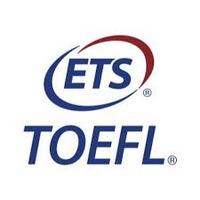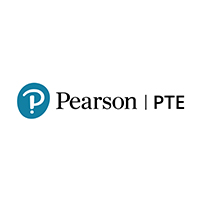VMC VIQ Scholarship Test
Register for Vidyamandir Intellect Quest. Get Scholarship and Cash Rewards.
NBSE HSSLC board exams are conducted every year by the Nagaland Board of School Education. Approximately 15,000 students register to appear in the HSSLC examination for all three streams – Arts, Commerce, and Science. The exam is conducted at more than 50 centres across Nagaland.
More About NBSE HSSLC Exams 2025:
The NBSE HSSLC exams 2025 will be held tentatively in February 2025. Students can refer to the NBSE HSSLC routine 2025 to know the subject-wise exam dates and timing and prepare for the exams accordingly.
The duration of the NBSE HSSLC exams is 3 hours per paper.
NBSE HSSLC result 2025 for the annual examination will be declared in April 2025.
| Full Exam Name | Nagaland Board of Secondary Education 12th Examination |
| Short Exam Name | NBSE HSSLC |
| Conducting Body | Nagaland Board Of School Education |
| Frequency Of Conduct | Once a year |
| Exam Level | Intermediate |
| Languages | Bengali +2 more |
| Mode Of Application | offline |
| Mode Of Exam | offline |
| Exam Duration | 3 Hours |
NBSE HSSLC Nagaland Board of Secondary Education 12th Examination (session 2025)
Students appearing for the NBSE HSSLC exams 2025 must meet certain eligibility criteria determined by the exam conducting authority.
The following are the eligibility criteria for students appearing in NBSE HSSLC exams 2025.
Download this ebook to learn about 50+ entrance exams for 12th students to get admission to the best colleges for undergraduates.
Download EBookIn the NBSE HSSLC exams 2025, students will appear for six external subjects, including one additional subject and three subjects that are internally assessed.


English: Unit 04
Political science: Unit 01
Political science: Unit 02
Political science: Unit 03
Political science: Unit 04
Political science: Unit 05
Political science: Unit 06
Political science: Unit 07
Political science: Unit 08
Political science: Unit 09
Political science: Unit 10
Political science: Unit 11
Political science: Unit 12
Political science: Unit 13
Political science: Unit 14
Political science: Unit 15
Political science: Unit 16
History: Unit 01
History: Unit 02
History: Unit 03
Psychology: Unit 01
Psychology: Unit 02
Psychology: Unit 03
Psychology: Unit 04
Psychology: Unit 05
Psychology: Unit 06
Psychology: Unit 07
Psychology: Unit 08
Philosophy: Unit 04
Philosophy: Unit 05
Philosophy: Unit 06
Philosophy: Unit 09
Philosophy: Unit 11
Sociology: Unit 01
Sociology: Unit 02
Sociology: Unit 03
Sociology: Unit 04
Sociology: Unit 05
Sociology: Unit 06
Geography: Unit 02
Geography: Unit 03
Geography: Unit 04
Geography: Unit 06
Geography: Unit 07
Geography: Unit 08
Geography: Unit 09
Geography: Unit 10
Education: Unit 01
Education: Unit 02
Education: Unit 03
Education: Unit 04
Education: Unit 05
Education: Unit 06
Education: Unit 07
Education: Unit 08
Education: Unit 09
Music: Unit 01
Economics: Unit 01
Economics: Unit 02
Economics: Unit 03
Economics: Unit 04
Economics: Unit 05
Economics: Unit 06
Economics: Unit 07
Economics: Unit 08
Economics: Unit 09
Economics: Unit 10
Physics: Unit 01
Physics: Unit 02
Physics: Unit 03
Physics: Unit 04
Physics: Unit 05
Physics: Unit 06
Physics: Unit 07
Physics: Unit 08
Physics: Unit 09
Physics: Unit 10
Chemistry: Unit 01
Chemistry: Unit 02
Chemistry: Unit 03
Chemistry: Unit 04
Chemistry: Unit 05
Chemistry: Unit 06
Chemistry: Unit 07
Chemistry: Unit 08
Chemistry: Unit 09
Chemistry: Unit 10
Chemistry: Unit 11
Chemistry: Unit 12
Chemistry: Unit 13
Biology: Unit 01
Biology: Unit 02
Biology: Unit 03
Biology: Unit 04
Biology: Unit 05
Mathematics: Unit 01
Mathematics: Unit 02
Mathematics: Unit 03
Mathematics: Unit 04
Mathematics: Unit 05
Mathematics: Unit 06
Computer science: Unit 01
Computer science: Unit 02
Computer science: Unit 03
Computer science: Unit 04
Computer science: Unit 05
Information practices: Unit 01
Information practices: Unit 02
Information practices: Unit 03
Information practices: Unit 04
Accountancy: Unit 01
Accountancy: Unit 02
Accountancy: Unit 03
Accountancy: Unit 04
Accountancy: Unit 05
Business studies: Unit 01
Business studies: Unit 02
Business studies: Unit 03
Business studies: Unit 04
Business studies: Unit 05
Business studies: Unit 06
Business studies: Unit 07
Business studies: Unit 08
Business studies: Unit 09
Business studies: Unit 10
Business studies: Unit 11
Business studies: Unit 12
Entrepreneurship: Unit 01
Entrepreneurship: Unit 02
Entrepreneurship: Unit 03
Entrepreneurship: Unit 05
Entrepreneurship: Unit 06
Fundamental of business mathematics: Unit 01
Fundamental of business mathematics: Unit 02
Fundamental of business mathematics: Unit 03
Fundamental of business mathematics: Unit 04
Fundamental of business mathematics: Unit 05
Fundamental of business mathematics: Unit 06
Fundamental of business mathematics: Unit 07
Fundamental of business mathematics: Unit 08
Fundamental of business mathematics: Unit 09
Fundamental of business mathematics: Unit 10
Financial markets management: Unit 01
Financial markets management: Unit 02
Financial markets management: Unit 03
Financial markets management: Unit 04
Financial markets management: Unit 05
NBSE HSSLC question papers are available to download in the form of pdf files through the official website.
1. Students must cover all the topics mentioned in the syllabus.
2. Clear all doubts by contacting the teacher concerned about the topics which are difficult.
3. They must make a timetable that includes each and every subject.
4. Students are advised to practise the previous years’ NBSE 12th question papers and sample papers available on the official website in order to improve speed and accuracy.
5. Short notes must also be made while studying which will help candidates at the time of revision.
6. To analyze the preparation level, students can also go for group studies.
Students will have to enter their roll number to check the NBSE 12th result 2025.
The result of NBSE class 12 will include the candidate’s name, subject-wise marks, roll number, and qualifying status.
Students will also be able to access their result via SMS. To access the result through SMS, students must type NBSE12<space>roll number and send it to 54242.
After receiving the text message, NBSE will send detailed result consisting of subject wise marks of the candidates.
NBSE HSSLC online result 2024 will be provisional in nature. NBSE will issue original mark sheets which must be collected by the students from their respective schools.

You can apply for the exams in offline mode through your respective schools.
The NBSE HSSLC compartment exams 2025 will be held in June 2025.
In this case, you can apply for revaluation or rechecking of marks.
You can check your NBSE result 2025 by entering your name.
The exams are held for a duration of 3-hours each.
You can download the NBSE HSSLC question papers from nbsenl.edu.in. Alternatively, click on the link provided to get the direct download links for the papers.
The result will be made available offline via SMS. For this, you have to send an SMS in the following format:
NBSE12<space>roll number and send it to 54242.
The NBSE HSSLC result 2025 will be made available online on the official website - nbsenl.edu.in.
Application Date
07 Oct, 2024 - 22 Nov, 2024
Application Correction Date
08 Oct, 2024 - 27 Nov, 2024
Application Date
24 Oct, 2024 - 02 Dec, 2024
Application Date
04 Nov, 2024 - 27 Nov, 2024
Application Date
08 Nov, 2024 - 30 Nov, 2024
Application Date
11 Nov, 2024 - 29 Nov, 2024
Exam Date
19 Nov, 2024 - 19 Nov, 2024
Exam Date
19 Nov, 2024 - 19 Nov, 2024
Exam Date
26 Nov, 2024 - 26 Nov, 2024
Application Date
29 Nov, 2024 - 29 Nov, 2024
Exam Date
03 Dec, 2024 - 03 Dec, 2024
Exam Date
03 Dec, 2024 - 03 Dec, 2024
Hi there,
Aspirants who are preparing for Nagaland 12th board exam must solve previous year question paper.
Solving previous year question paper helps students in understanding pattern of exam. It helps students in time management. Furthermore, students get to know about their strength and weakness after solving previous year question paper.
You can find political science question paper 2021 of NBSE HSSLC from the following link: https://www.google.com/amp/s/school.careers360.com/boards/nbse/nbse-hsslc-question-papers/amp
Hope it helps you
Good luck!
Hello,
Here by, I am providing you a link where you will find the question papers :
https://www.google.com/amp/s/school.careers360.com/articles/nbse-hsslc-question-papers/amp
Kindly, visit the link and download the question paper.
Hope this will help you.
Thank you!
Hello,
Here by, I am providing you with a link from where you will get question papers of last few years :
https://www.google.com/amp/s/school.careers360.com/articles/nbse-hslc-question-papers/amp
Kindly, Visit the link and download the paper and practice accordingly.
Good luck!
Hope this helps you.
Thank you!
dear aspirant,
Students can go through the eligibility criteria of MBSE HSSLC 2021 exams below:
• They must have completed a regular course of study for Class 11.
• In addition to this, they must have passed Class 11 examination from a school affiliated to the board.
• Students need to have 75% attendance in subjects of Internal Assessment.
• They must possess a good moral character.
Hello,
As I can see you need NBSE HSSLC 2020 question paper. I will be attaching the link below from where you can download it as per your convenience.
Question paper link :- https://school.careers360.com/articles/nbse-hsslc-question-papers
I hope this information will be useful for you.
If you any have query please don't hesitate to drop message in the comment section below.
All the best!
(javascript%3A;)
Register for Vidyamandir Intellect Quest. Get Scholarship and Cash Rewards.
As per latest 2024 syllabus. Physics formulas, equations, & laws of class 11 & 12th chapters
As per latest 2024 syllabus. Chemistry formulas, equations, & laws of class 11 & 12th chapters
Accepted by more than 11,000 universities in over 150 countries worldwide
Register now for PTE & Unlock 20% OFF : Use promo code: 'C360SPL20'. Valid till 30th NOV'24! Trusted by 3,500+ universities globally
As per latest 2024 syllabus. Study 40% syllabus and score upto 100% marks in JEE